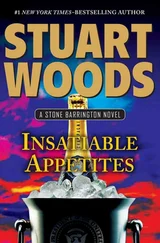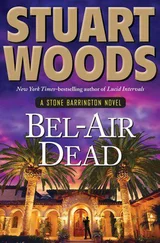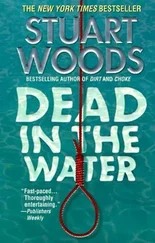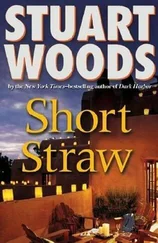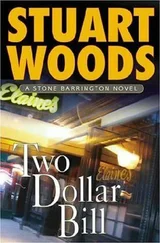“As soon as he left the room I got my clothes back on and went home. Before leaving I typed a letter of resignation with immediate effect, signed it, and left it on his desk. I went home, and the next day I started looking for another job.
“A couple of months later I found myself pregnant. Before my encounter with Mr. Knott in his office I had not had sex since my divorce, four years before that, and I had not had sex since my resignation.
“I had lunch shortly thereafter with a former coworker at Knott Industries who told me that something similar had happened to another woman, Helen Trimble. She had a daughter from that experience. I was put in touch with her in New York City, where she had gone to live, and we compared our experiences. She had also been raped by Mr. Knott. She had received a monthly check for two thousand dollars from a New York bank since the birth of her child, but she had not seen or spoken to Mr. Knott since she had resigned from his employment, shortly after she became pregnant and revealed it to Mr. Knott.
“She helped me find an apartment in New York, and I moved there, using up most of my savings. I found employment as a seamstress with a dress manufacturer. Shortly after I gave birth, I began receiving a monthly check from the same bank as Ms. Trimble had. She then told me that she had recently phoned Mr. Knott and asked for more money and an educational fund for her daughter, who was very bright and good in school. He told her to go to hell, and immediately after that the monthly checks stopped coming. She told me that Mr. Knott had threatened her, and that she was frightened.
“Shortly after that she went to visit her parents in New Jersey and, driving back to New York, she collided with a bridge on the turnpike. The police said it was an accident, that she had fallen asleep at the wheel. She and her daughter were both killed instantly.
“I immediately took my newborn baby and left New York City, fearing for my life. I moved to a small town in southern New Jersey called Greenwich, where I went to work for a sailmaker, who trained me to sew sails.
“Two years ago I met a retired army master sergeant, and eventually we married and he adopted my son. We bought a house in another town and moved there. Recently, I learned that two men with badges had visited my former employer in Greenwich and were looking for me, and remembering what had happened to Helen Trimble, I became frightened. My family and I have now moved to a location that will remain undisclosed until I feel safe in returning to my home.”
She held up a photograph. “This is a picture of Nelson Knott,” she said, then held up another photograph. “This is a picture of my son, who is now twelve years old. As you can see, he strongly resembles his biological father. He has given a blood sample which may be used to compare my son’s DNA with that of Nelson Knott.” After another minute, the image faded.
Stone took the disc from his computer and buzzed Joan; she came in. He shook the FedEx envelope and a tube, labeled, dated, and identified as Thomas Parker’s blood, fell out. He handed Joan the disc. “Please call Bob Cantor and have him make two hundred and ten copies of this DVD ASAP. When they arrive, put one in each envelope in the wine cellar and the rest in my safe.” He handed her the vial. “Please call my doctor and find out where a DNA profile can be made of this blood and send it there.”
“You betcha,” she said. She took the disc and the vial and went back to her office.
Stone thought for a moment, then called Lance Cabot.
“Yes, Stone?”
“Ed Rawls has located the mother of the twelve-year-old, who is now remarried. I have spirited her, her son, and her husband out of the country, where they will remain until it is safe for them to return.”
“That’s good news. We’ll need to get her interviewed at once.”
“I don’t think that will be necessary. She sent me a DVD, on which she relates how she worked as an executive assistant to Nelson Knott, who raped her in his office. She later gave birth to a son, now twelve. She knew the other mother, whose name was Helen Trimble, whose story was much the same as the second mother’s. I am having the DVD duplicated and I will include one with each of Ed Rawls’s books. She also sent me a vial of her son’s blood for DNA purposes, which I am sending out for a profile.”
“That is excellent news,” Lance said.
“Will you find a way to let Will know?”
“I have a meeting in Washington later today, and he will be there.”
“Good. You might discuss with him when would be a good time for me to have the books mailed.”
“Certainly.”
“Lance, you employ a lot of people who are sneaky for a living, do you think one or more of them might contrive to get a DNA sample from Nelson Knott?”
“What a good idea,” Lance said, but he didn’t say he was going to do it. “E-mail me the DVD, and I’ll get back to you.” He hung up.
Stone called Ed Rawls.
“Hello, Stone.”
“The family is off,” Stone said. “They’re about halfway across the Atlantic as we speak.”
“Great news.”
“There’s more.” Stone told him about the DVD. “I’ll send it to you.”
“That is fantastic. I wish I’d thought of it.”
“I wish I’d thought of it, too. And,” he said, “she sent a blood sample from her son. I’m sending it out for a DNA profile, and Lance is working on getting a DNA sample from Nelson Knott.”
“Wow! What a great woman!”
“Lance has a meeting with Will today. He’ll get back to me.”
“And you get back to me,” Ed said.
Erik Macher got back to his office, switched on his computer, and brought up his aircraft tracking software. He found the Gulfstream, identified by its tail number, halfway across the Atlantic. He estimated the distance to Brussels and calculated that the flight would land at about ten PM, European time. He called his contact in Brussels and conveyed that information to him.
Brussels? Why Brussels? It seemed an unlikely place to hide a family, but perhaps that was reason enough to choose it. He set his iPhone alarm to warn him when the aircraft would be approaching Brussels. It was very important that the family be intercepted and followed at the airport, because once in the city, they might be impossible to find.
At eight-thirty PM his alarm chimed, and he went back to the tracking software to recalculate the Gulfstream’s landing time. Its tail number was nowhere to be seen. He rebooted the software and looked again; the aircraft was not on the line between its former mid-Atlantic position and Brussels. He felt a rising wave of panic; if he lost these people St. Clair would kill him.
Then he saw the tail number, not over the English Channel, where he would have expected it, but over southern England. He got out an aeronautical chart of the area and put the position of the airplane between the Bournemouth and Southampton airports, headed west. He watched as the aircraft made a 180-degree turn back to the east, and a couple of minutes later it stopped moving. That was impossible; the airplane couldn’t hover, and there was no airport where it had landed. You didn’t put down an aircraft of that size on a grass strip somewhere; you needed pavement, and a lot of it, if you ever planned to take off again.
He continued to stare at the symbol, and perhaps ten minutes later it began to move again, very slowly. It was taxiing back to the west end of what must be a runway for takeoff. Sure enough, as he watched it picked up speed and left, turning toward the Channel. Clearly, the family had been dropped off in an area with no airport.
He brought up the opposition research file on Stone Barrington and looked for a connection with England. There it was: he owned a house called Windward Hall, on land just south of the village of Beaulieu. He Googled Windward Hall and found a history of the house, including the information that, during World War II, British Bomber Command had had a base on the property, with a seven-thousand-foot runway. It had been used mainly for intelligence and surveillance flights, and as a departure point for Special Operations executive agents being parachuted into France. That would have kept it off aeronautical charts; that and camouflage would have made it difficult for the Germans to locate.
Читать дальше

